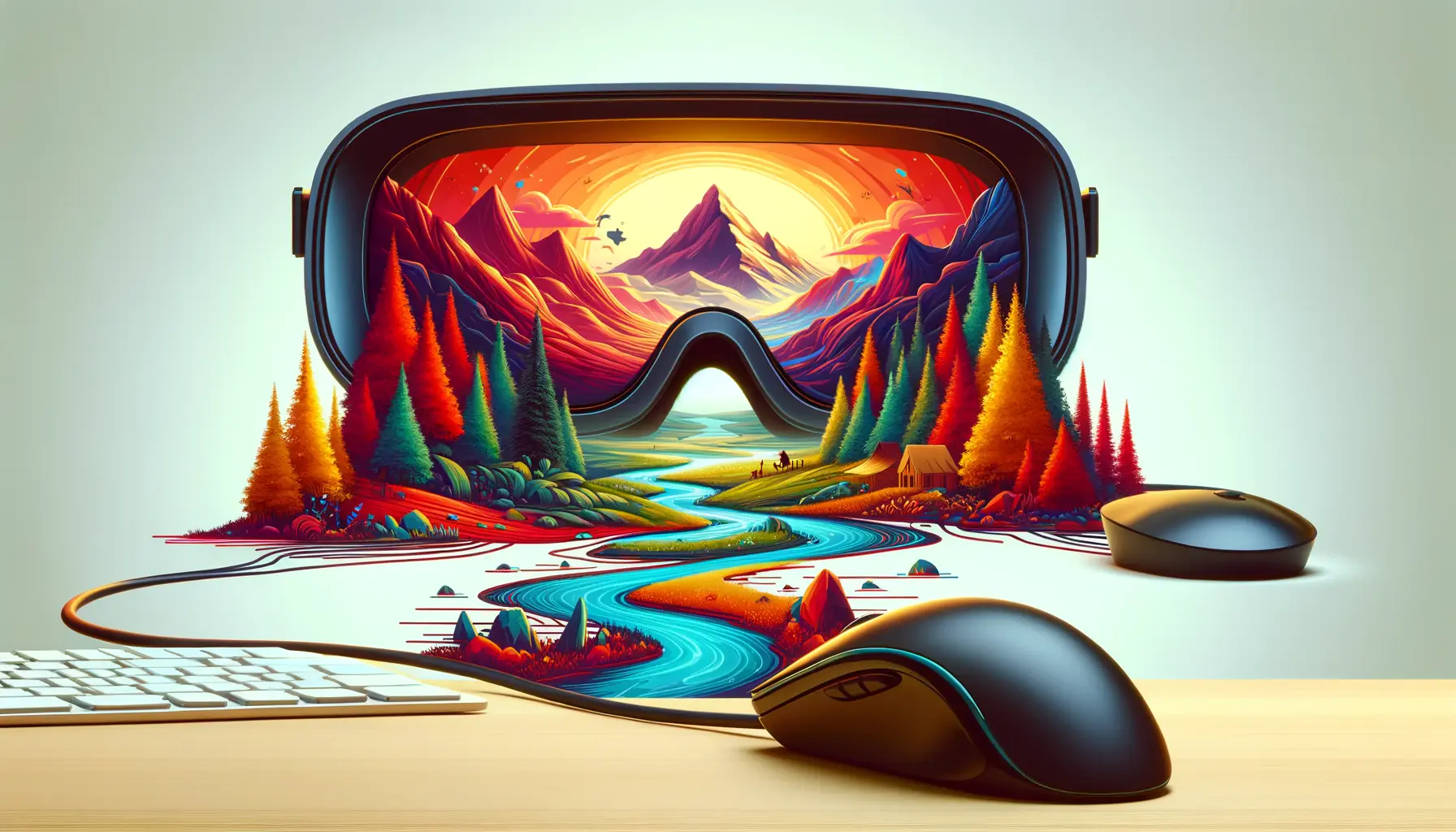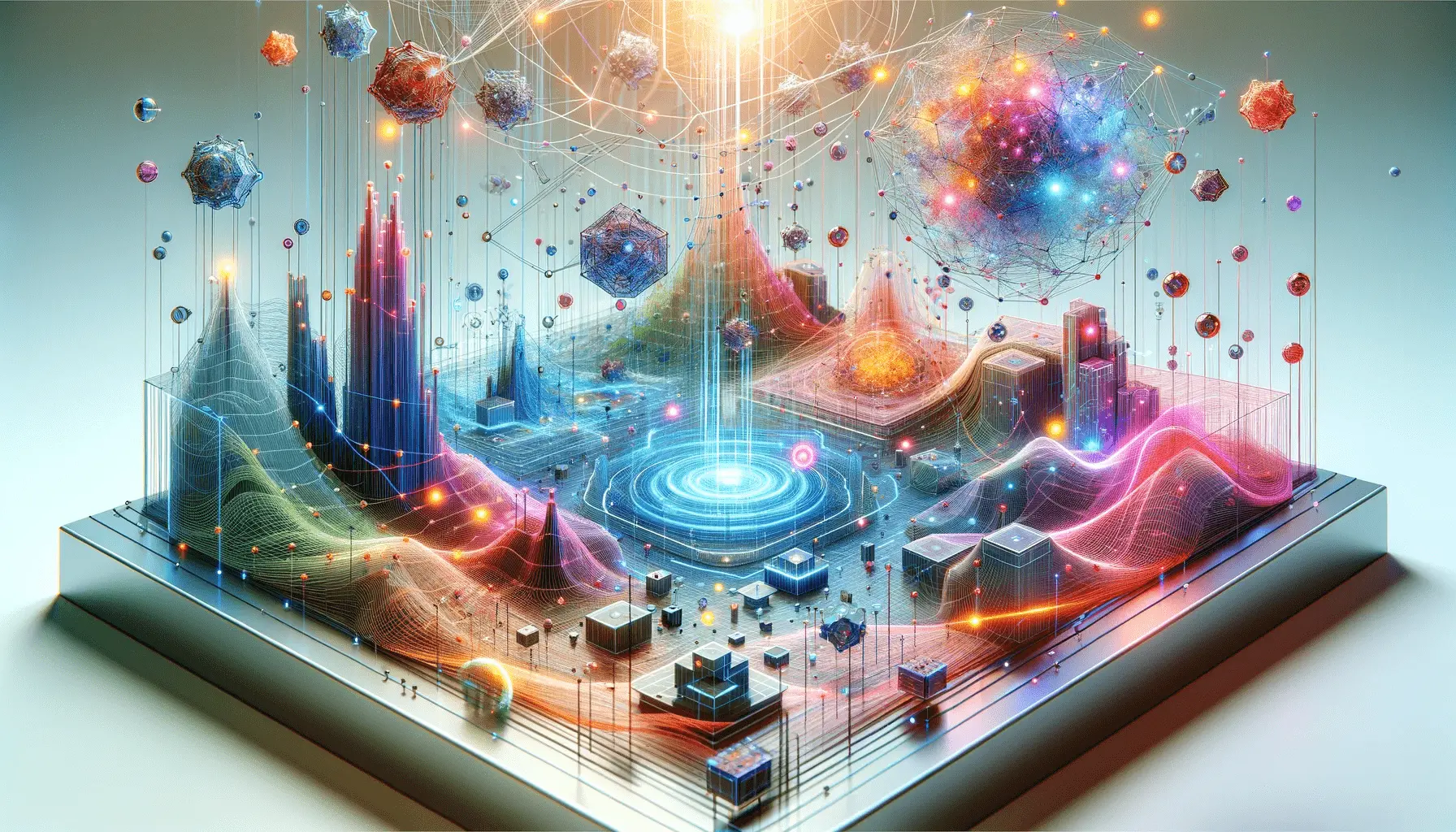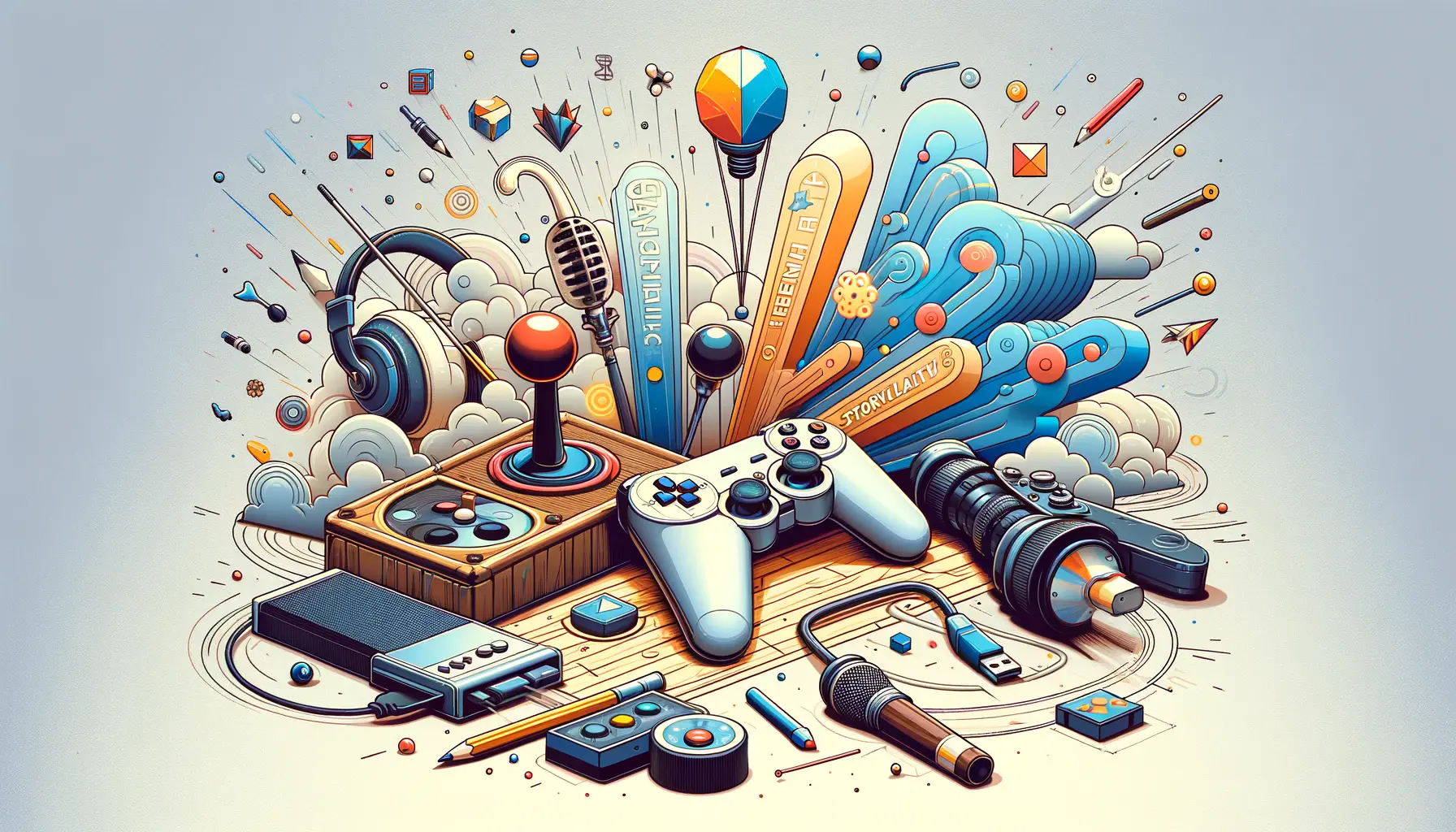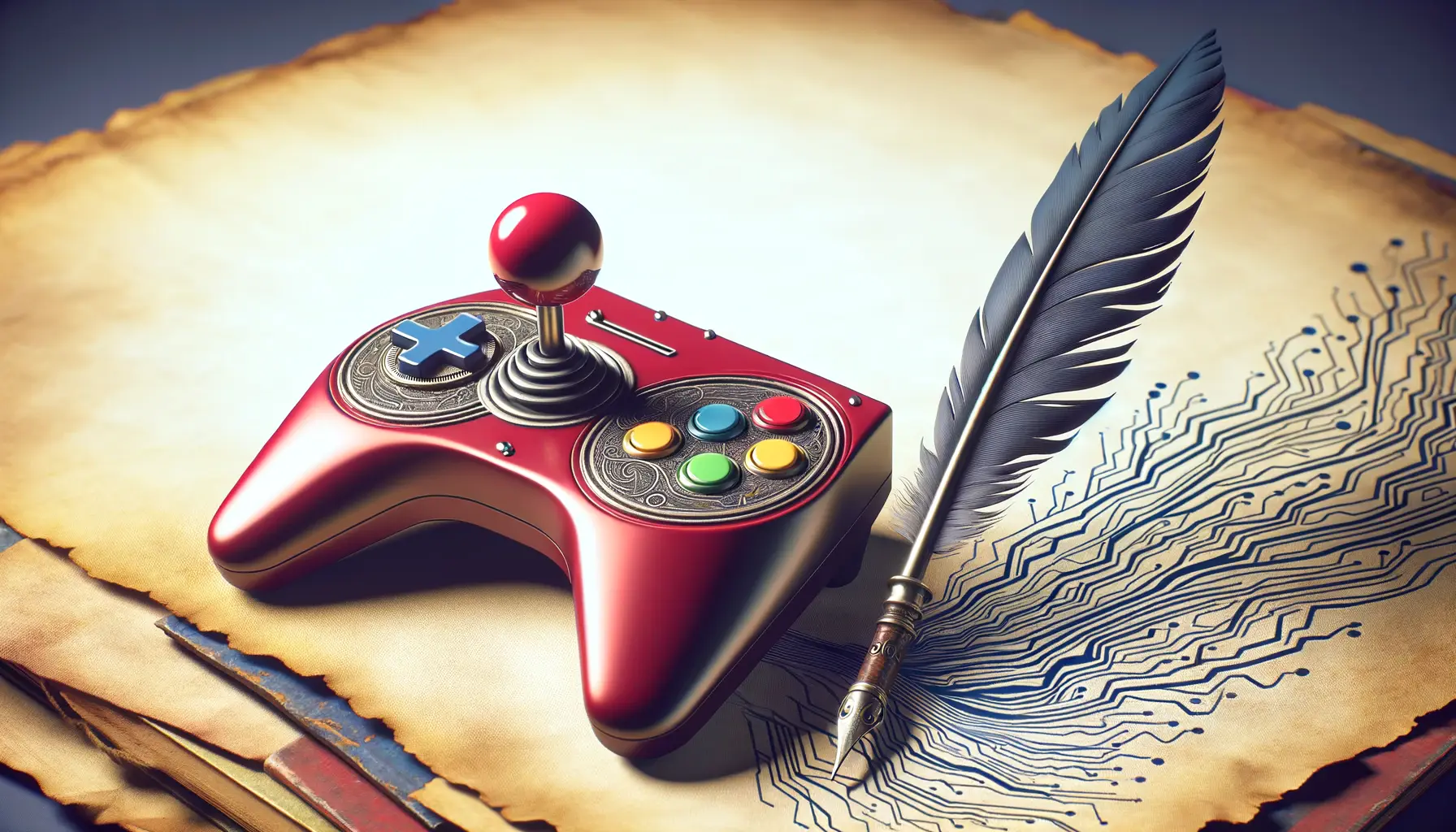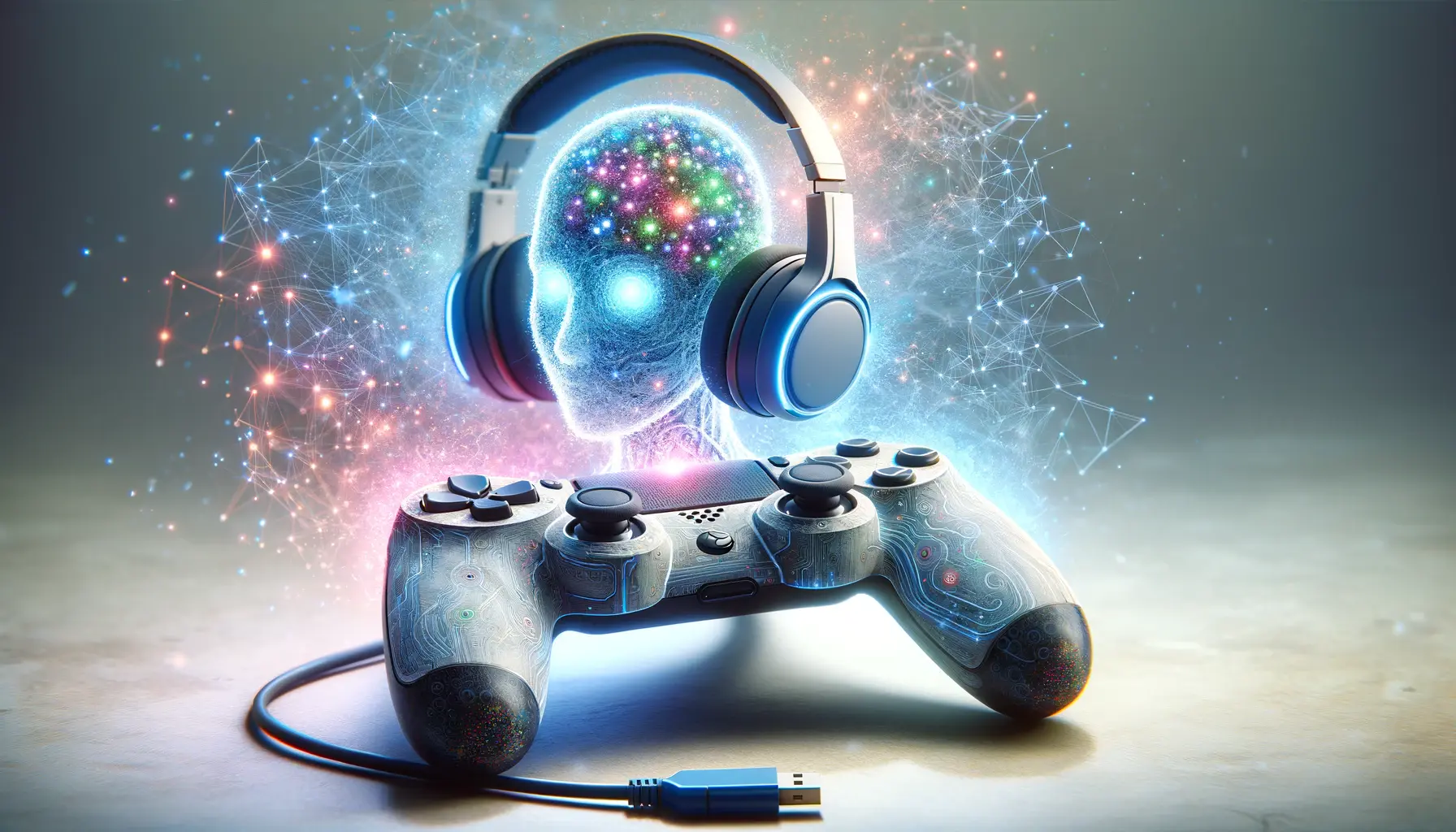The intersection of artificial intelligence and gaming has opened up new frontiers for creativity and immersion in virtual environments.
Among the most groundbreaking developments in this space is DALL-E, an AI developed by OpenAI, which has the capability to generate detailed images and art from textual descriptions.
This technology, when applied to the gaming industry, promises to revolutionize the way game developers and designers conceive and create their worlds, offering unprecedented levels of detail and imagination.
Integrating DALL-E into gaming is not just about enhancing visual aesthetics; it’s about redefining the creative process behind game development.
This AI’s ability to understand and interpret complex prompts allows for the creation of unique, dynamic, and deeply immersive environments that were previously unimaginable or too resource-intensive to produce.
The potential for DALL-E in gaming stretches from indie developers to major studios, enabling a new era of game design that is more accessible, efficient, and boundless in creative possibilities.
- The Evolution of Game Design with DALL-E
- Challenges and Solutions in AI-Driven Game Development
- Revolutionizing Character Design with DALL-E
- Personalizing Player Experience with Dynamic Content
- Optimizing Game Development Workflows with DALL-E
- Collaboration Between AI and Human Creativity
- Future Trends in AI-Driven Game Development
- Embracing the Future of Gaming with DALL-E
- DALL-E in Gaming: Essential FAQs
The Evolution of Game Design with DALL-E
From Pixels to AI-Generated Worlds
The journey of game design has seen a remarkable evolution from the simple pixelated forms of the early days to the highly detailed 3D models of the modern era.
The introduction of DALL-E into this trajectory marks a significant leap, offering tools that can generate complex, photorealistic environments and characters based on textual descriptions.
This shift not only accelerates the design process but also opens up new avenues for creativity, allowing developers to experiment with ideas that were previously constrained by technical limitations or the sheer time investment required to bring them to life.
Imagine a scenario where a game designer can simply describe a scene as “a dystopian cityscape, under a crimson sky, with towering skyscrapers overgrown with foliage” and have DALL-E generate a series of unique, detailed images that match this description.
This capability can drastically reduce the time and resources needed for conceptualization and prototyping, enabling a more iterative and experimental approach to game design.
Enhancing Player Immersion Through Detailed Environments
The core of any memorable gaming experience is immersion, the ability of a game to draw players into its world, making them feel as if they are truly part of the story.
DALL-E’s capacity to create highly detailed and varied environments plays a crucial role in enhancing this aspect of games.
By generating landscapes, structures, and objects that are rich in detail and uniqueness, DALL-E can help developers craft worlds that are more engaging and believable.
Moreover, the AI’s ability to produce variations on a theme allows for the creation of dynamic environments that can change in response to player actions or game events, adding a layer of depth and interactivity that was previously difficult to achieve.
This not only makes the game world more interesting and engaging but also contributes to a more personalized gaming experience, as players see the impact of their decisions reflected in the world around them.
The integration of DALL-E into game development heralds a new era of creativity and immersion, making the process more accessible and enabling the creation of worlds that are as limitless as the imagination.
Challenges and Solutions in AI-Driven Game Development
The integration of AI like DALL-E into game development is not without its challenges.
While the technology offers incredible opportunities for creativity and efficiency, it also presents new hurdles for developers to overcome.
These challenges range from technical limitations to ethical considerations, each requiring thoughtful solutions to ensure the responsible and effective use of AI in gaming.
Technical Limitations and Overcoming Them
One of the primary challenges is the technical limitation of AI systems, including issues related to image resolution, style consistency, and the interpretation of complex prompts.
DALL-E, while powerful, may not always produce results that perfectly align with a developer’s vision, especially when dealing with intricate or highly specific design requirements.
- Image Resolution: Early versions of DALL-E and similar AI tools sometimes struggled with generating high-resolution images suitable for detailed game environments. Developers can overcome this by using AI-generated images as concept art or inspiration, rather than final assets, and employing traditional methods or other software to refine these images.
- Style Consistency: Maintaining a consistent artistic style is crucial for game design. Developers can address inconsistencies by using DALL-E-generated images as a base, then applying style transfer techniques or manual adjustments to ensure all game assets conform to the desired aesthetic.
- Complex Prompts: AI’s interpretation of complex prompts can be unpredictable. To mitigate this, developers can experiment with breaking down prompts into simpler, more specific components, gradually guiding the AI towards the intended outcome through iterative refinement.
Ethical Considerations in AI Utilization
Beyond technical challenges, the use of AI in game development also raises ethical questions, particularly regarding originality and copyright.
As DALL-E generates images based on a vast dataset of existing artwork, developers must navigate the fine line between inspiration and infringement, ensuring their creations are both unique and legally compliant.
- Originality: To ensure the originality of AI-generated assets, developers can use these images as a starting point, then significantly modify or combine them with original artwork, infusing the game with unique visual elements that reflect the creative vision of its developers.
- Copyright Compliance: Navigating copyright issues requires a careful approach. Developers should be aware of the potential for AI to reproduce elements from copyrighted materials and should conduct thorough reviews of AI-generated assets to avoid legal complications.
While challenges exist in integrating DALL-E into game development, innovative solutions and a mindful approach can help developers harness the full potential of AI, pushing the boundaries of creativity and immersion in gaming.
Revolutionizing Character Design with DALL-E
The advent of AI technologies like DALL-E has not only transformed the landscape of environment creation in games but also revolutionized the way characters are designed.
Character design is a pivotal element of game development, as it directly influences player engagement and narrative depth.
The application of DALL-E in this domain offers a blend of creativity, efficiency, and personalization that was previously unattainable.
Traditionally, character design is a time-consuming process that requires a detailed understanding of anatomy, fashion, and narrative role.
DALL-E streamlines this process by generating detailed character concepts from textual descriptions, allowing designers to explore a wider range of appearances, outfits, and expressions with ease.
This section delves into how DALL-E is reshaping character design in gaming.
Enhancing Creativity and Diversity
One of the most significant impacts of DALL-E on character design is its ability to enhance creativity and diversity.
By inputting descriptive prompts, designers can generate a plethora of character concepts that vary in race, gender, attire, and more.
This not only accelerates the brainstorming process but also encourages the inclusion of diverse characters, reflecting a broader spectrum of player identities and experiences.
- Exploring various cultural backgrounds and aesthetics to create characters that resonate with a global audience.
- Generating characters with a wide range of emotional expressions and poses, enriching the narrative and gameplay experience.
Streamlining the Design Process
DALL-E’s ability to quickly produce character concepts based on textual prompts significantly streamlines the design process.
This efficiency allows designers to focus more on refining and integrating these concepts into the game’s world, rather than spending countless hours on initial sketches.
The iterative process of refining AI-generated designs fosters a more dynamic and collaborative environment between artists and AI, leading to more polished and cohesive character designs.
- Using AI-generated concepts as a base for further development and refinement by the design team.
- Iteratively adjusting prompts to fine-tune character appearances and align them with the game’s aesthetic and narrative requirements.
DALL-E’s contribution to character design in gaming is transformative, offering a tool that complements the creativity and skill of human designers, leading to richer, more diverse, and engaging character rosters.
Personalizing Player Experience with Dynamic Content
The integration of DALL-E into gaming extends beyond the realms of environment and character design, venturing into the personalization of player experiences through dynamic content creation.
This aspect of game development is crucial for building deeper connections between the game and its players, offering unique experiences tailored to individual preferences or actions.
DALL-E’s capability to generate content on-the-fly based on specific prompts makes it an invaluable tool for developers looking to enhance game personalization.
Dynamic content refers to game elements that change or adapt based on player choices, actions, or in-game events.
This can range from visual changes in the environment to the appearance of characters and objects.
The application of DALL-E in creating such content not only makes these adaptations more seamless but also significantly more varied and detailed, providing a richer gaming experience.
Adapting Environments to Player Actions
One of the key areas where DALL-E can have a profound impact is in the adaptation of game environments in response to player actions.
Whether it’s changing weather conditions, the aftermath of battles, or the progression of time, DALL-E can generate images that reflect these changes, making the game world feel more alive and responsive.
This level of environmental dynamism adds depth to the gameplay, encouraging players to explore and interact with the game world in new ways.
- Generating post-battle scenes with varying degrees of destruction based on the intensity of the conflict.
- Creating seasonal changes within the game world, offering different visuals and challenges for the player to navigate.
Customizing Characters and Objects
Beyond environmental changes, DALL-E also enables the customization of characters and objects in real-time, allowing for a more personalized gaming experience.
This could involve altering character appearances based on player choices, such as changing outfits, weapons, or even physical attributes.
Similarly, objects within the game can be customized or generated to match player preferences or achievements, adding a layer of personal achievement and uniqueness to the gameplay.
- Allowing players to design or modify their character’s appearance using textual prompts, which DALL-E then translates into visual changes.
- Generating unique items or rewards that reflect the player’s journey and choices throughout the game.
The use of DALL-E in personalizing player experience through dynamic content creation represents a significant leap forward in making games more immersive, engaging, and reflective of individual player journeys.
Optimizing Game Development Workflows with DALL-E
The advent of AI technologies like DALL-E is not only transforming the creative aspects of game development but also optimizing workflows, making the process more efficient and cost-effective.
By automating and enhancing various stages of the development cycle, DALL-E enables small and large studios alike to streamline their operations, from conceptualization to final asset creation.
This optimization can lead to faster development times, reduced costs, and the ability to allocate resources to other critical areas, such as gameplay mechanics or narrative development.
Incorporating DALL-E into game development workflows involves leveraging its capabilities at different stages of production.
This can range from initial concept art creation to generating textures and other assets required for game environments and characters.
The impact of this integration is profound, offering a glimpse into the future of game development where AI plays a central role in both the creative and technical processes.
Streamlining Concept Art Creation
Concept art is a crucial early stage in game development, providing a visual representation of ideas for game worlds, characters, and objects.
Traditionally, this process requires significant time and effort from skilled artists.
DALL-E, however, can generate a wide range of concept art from textual descriptions, significantly speeding up this process.
This allows for rapid exploration of different styles and themes, enabling teams to quickly iterate on ideas and make decisions about the game’s visual direction.
- Generating diverse environmental and character concepts based on textual prompts, facilitating quick iterations.
- Allowing for the exploration of multiple artistic styles and themes without the need for extensive manual work.
Enhancing Asset Production
Beyond concept art, DALL-E can also contribute to the production of game assets.
This includes textures, items, and background elements that are essential for building game environments.
By automating the generation of these assets, DALL-E can help reduce the workload on artists and designers, allowing them to focus on refining and integrating these elements into the game.
This not only speeds up the development process but also ensures a consistent quality and style across all game assets.
- Creating detailed textures and patterns for use in game environments and character models.
- Generating a variety of items and objects that can be used to populate game worlds, enhancing the overall richness and detail of the game.
The optimization of game development workflows through DALL-E not only accelerates production but also opens up new possibilities for creativity and innovation, marking a significant shift in how games are created and developed.
Collaboration Between AI and Human Creativity
The integration of DALL-E into the gaming industry represents a pioneering collaboration between artificial intelligence and human creativity.
This partnership is not about replacing human artists and designers but enhancing their capabilities, providing them with new tools to express their visions more freely and efficiently.
The synergy between AI-generated content and human creativity opens up unprecedented opportunities for innovation in game design and development.
Understanding the balance and interaction between AI and human creativity is crucial for maximizing the benefits of technologies like DALL-E.
This collaboration allows for a more expansive exploration of creative ideas, faster iteration on concepts, and the creation of content that would be impractical or impossible to produce manually.
Here, we explore how this partnership is shaping the future of game development.
Expanding Creative Possibilities
The use of DALL-E in game development significantly expands the creative possibilities available to designers and artists.
By providing a tool that can instantly generate images from textual descriptions, DALL-E enables creative professionals to explore ideas and concepts that were previously limited by time, resources, or technical skills.
This freedom to experiment with a wide range of styles, themes, and details enriches the creative process and leads to more innovative and diverse game content.
- Enabling rapid prototyping of environments, characters, and objects, allowing teams to explore a broader range of creative ideas.
- Facilitating the inclusion of diverse and complex elements that add depth and richness to game worlds.
Enhancing the Creative Workflow
The collaboration between AI and human creativity also enhances the overall workflow in game development.
DALL-E can take on repetitive or time-consuming tasks, freeing up human artists to focus on aspects of design and development that require a nuanced understanding of narrative, aesthetics, and player experience.
This division of labor allows for a more efficient use of resources and enables creative teams to devote more attention to refining and perfecting their games.
- Automating the generation of base assets, which can then be refined and customized by artists.
- Providing a tool for quick adjustments and iterations on designs, reducing the time between concept and implementation.
The collaboration between AI like DALL-E and human creativity is not a competition but a partnership that enhances the game development process. By leveraging the strengths of both, the gaming industry can push the boundaries of what’s possible, creating more immersive, engaging, and innovative gaming experiences.
Future Trends in AI-Driven Game Development
The integration of AI technologies like DALL-E into game development is not just a passing trend but a glimpse into the future of the industry.
As these technologies continue to evolve, they will shape not only how games are designed and developed but also how they are played and experienced by gamers.
The potential for AI to drive innovation in game development is vast, with DALL-E being at the forefront of this transformation.
This section explores the emerging trends and potential future developments in AI-driven game development.
As AI becomes more sophisticated, its role in game development is set to expand, offering new tools and methodologies for creating immersive and dynamic gaming experiences.
The future of AI in gaming holds exciting possibilities, from fully AI-generated games to adaptive narratives that change based on player behavior.
Understanding these trends is crucial for developers looking to stay ahead in the rapidly evolving gaming landscape.
Adaptive and Personalized Gaming Experiences
One of the most promising trends in AI-driven game development is the move towards more adaptive and personalized gaming experiences.
AI technologies like DALL-E can generate content in real-time, allowing games to adapt dynamically to player choices and actions.
This could lead to games with narratives and worlds that evolve based on individual player behavior, offering a truly personalized experience.
Such adaptability extends to character interactions, environmental changes, and even game difficulty, making each player’s journey unique.
- Creating dynamic storylines that branch and change based on player decisions, with AI generating content to fill in the narrative gaps.
- Adjusting game difficulty and challenges in real-time to match the player’s skill level, enhancing engagement and retention.
Enhanced Realism and Immersion
Another trend is the push towards enhanced realism and immersion in games.
With AI like DALL-E, developers can create highly detailed and realistic environments, characters, and objects, blurring the line between game and reality.
This level of detail not only improves the visual appeal of games but also enhances the overall immersive experience, making players feel more connected to the game world.
As AI technology improves, we can expect to see even more lifelike simulations and environments in future games.
- Generating photorealistic environments and characters that react and evolve in complex, lifelike ways.
- Creating immersive soundscapes and audio effects using AI, further enhancing the realism of the gaming experience.
The future of AI-driven game development is bright, with technologies like DALL-E paving the way for more immersive, personalized, and dynamic gaming experiences. As these trends continue to evolve, they promise to redefine the boundaries of gaming, offering new possibilities for players and developers alike.
Embracing the Future of Gaming with DALL-E
The integration of DALL-E into the gaming industry marks a pivotal moment in the evolution of game development and design.
This technology, with its ability to generate detailed and diverse content from simple textual prompts, offers a glimpse into a future where the boundaries of creativity and immersion are continually expanded.
As we have explored throughout this article, the application of DALL-E in gaming extends far beyond just creating visually stunning environments and characters.
It encompasses the optimization of development workflows, the personalization of player experiences, and the fostering of a unique collaboration between AI and human creativity.
Revolutionizing Creative Processes
The advent of DALL-E in gaming has revolutionized the creative processes behind game development, enabling designers and developers to explore new realms of creativity.
By automating the generation of concept art and assets, DALL-E allows for a more efficient and flexible approach to game design.
This not only speeds up the development process but also opens up new possibilities for storytelling and world-building, making games more engaging and immersive for players.
Personalizing the Gaming Experience
One of the most exciting prospects of DALL-E’s integration into gaming is the ability to offer personalized gaming experiences.
By dynamically generating content that adapts to player actions and decisions, games can become more than just a form of entertainment; they can offer unique, personalized journeys that reflect the individuality of each player.
This level of personalization is a significant step towards creating more immersive and emotionally resonant gaming experiences.
Looking Ahead: The Future of AI in Gaming
As we look to the future, the role of AI in gaming, particularly technologies like DALL-E, is set to become even more significant.
With advancements in AI, we can anticipate games that are not only more realistic and immersive but also more adaptive and personalized.
The potential for AI to transform the gaming industry is immense, promising a future where games are not just played but experienced in a deeply personal and interactive way.
- The continuous improvement of AI technologies will lead to even more realistic and dynamic game worlds.
- Advancements in AI-driven narrative design will offer players more meaningful and varied story experiences.
- The increasing accessibility of AI tools like DALL-E will democratize game development, enabling more creators to bring their visions to life.
In conclusion, DALL-E’s impact on gaming is profound, offering a new paradigm for how games are designed, developed, and experienced.
As we embrace these advancements, the future of gaming looks brighter and more exciting than ever, promising a world where the limits of creativity and immersion are constantly being redefined.
The journey of DALL-E in gaming is just beginning, and its potential to revolutionize the industry knows no bounds.
DALL-E in Gaming: Essential FAQs
Explore the most common inquiries about the revolutionary impact of DALL-E on the gaming industry.
DALL-E revolutionizes game development by generating detailed art and assets from textual descriptions, enhancing creativity and efficiency.
Yes, DALL-E can generate highly realistic and diverse characters based on detailed textual prompts, offering unparalleled creativity.
DALL-E significantly enhances game environment design by creating immersive, detailed worlds from simple text descriptions.
Yes, DALL-E’s technology is accessible to indie developers, democratizing high-quality asset creation and fostering innovation.
DALL-E enables the personalization of gaming experiences by dynamically generating content that adapts to player decisions.
By automating asset and character design, DALL-E can significantly reduce game development time and resource requirements.
DALL-E enhances player immersion by creating detailed, dynamic environments and characters that respond to player interactions.
DALL-E suggests future gaming trends towards more adaptive, personalized experiences with AI-generated content shaping dynamic narratives.
